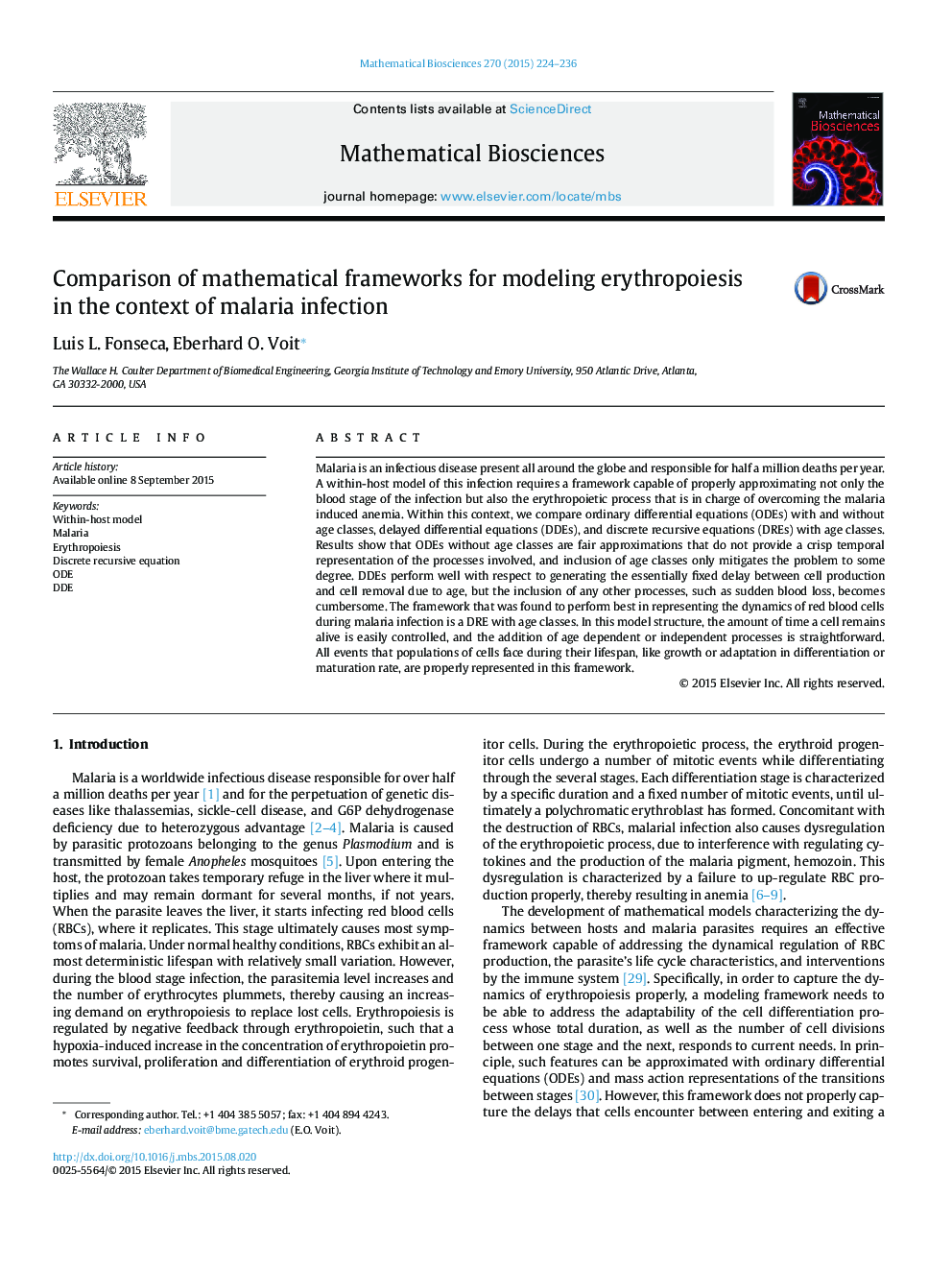| Article ID | Journal | Published Year | Pages | File Type |
|---|---|---|---|---|
| 4499895 | Mathematical Biosciences | 2015 | 13 Pages |
Malaria is an infectious disease present all around the globe and responsible for half a million deaths per year. A within-host model of this infection requires a framework capable of properly approximating not only the blood stage of the infection but also the erythropoietic process that is in charge of overcoming the malaria induced anemia. Within this context, we compare ordinary differential equations (ODEs) with and without age classes, delayed differential equations (DDEs), and discrete recursive equations (DREs) with age classes. Results show that ODEs without age classes are fair approximations that do not provide a crisp temporal representation of the processes involved, and inclusion of age classes only mitigates the problem to some degree. DDEs perform well with respect to generating the essentially fixed delay between cell production and cell removal due to age, but the inclusion of any other processes, such as sudden blood loss, becomes cumbersome. The framework that was found to perform best in representing the dynamics of red blood cells during malaria infection is a DRE with age classes. In this model structure, the amount of time a cell remains alive is easily controlled, and the addition of age dependent or independent processes is straightforward. All events that populations of cells face during their lifespan, like growth or adaptation in differentiation or maturation rate, are properly represented in this framework.
